You’ve seen rollerskiers confidently gliding by on the bike path. It looks fun … and maybe tricky. But once you get the hang of it, rollerskiing can be a great way to keep your Nordic skills fresh throughout the year. “It’s the closest you can get [to cross country skiing] in terms of technique, mechanics, strength and aerobic demands,” says Adam Terko, executive director and head coach for juniors at Mansfield Nordic in Vermont, as well as Cross Country Skier’s technical editor.
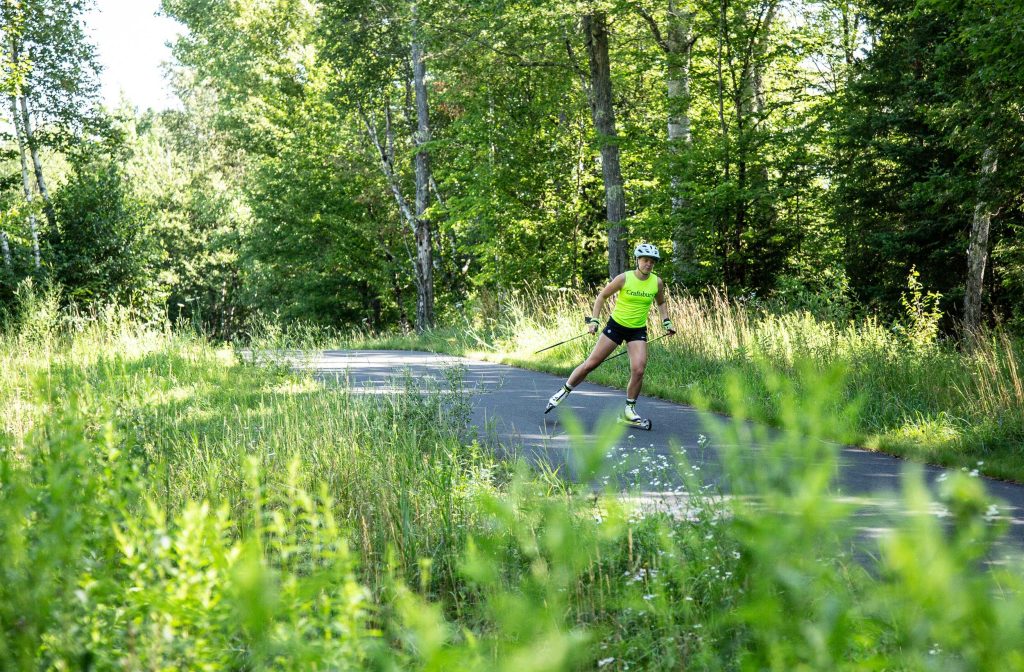
To help you get started, we interviewed Terko about the basics of rollerskiing. Here is his advice, in his own words.
What do I need to rollerski?
Skis, of course. (See our recent rollerski review.) Like Nordic skis, rollerskis come in skate and classic versions, but they’re much shorter than their on-snow counterparts.
Boots. For most people, your regular winter ski boots are perfectly fine, as the bindings are the same on rollerskis. Skiers who have rollerskied for a while will eventually retire an old pair of winter boots and use them just for rollerskiing. That’s because road salt and sweat and being scuffed around on the pavement can be hard on boots. A few companies, like Alpina, make rollerski-specific boots, which are more breathable than winter boots.
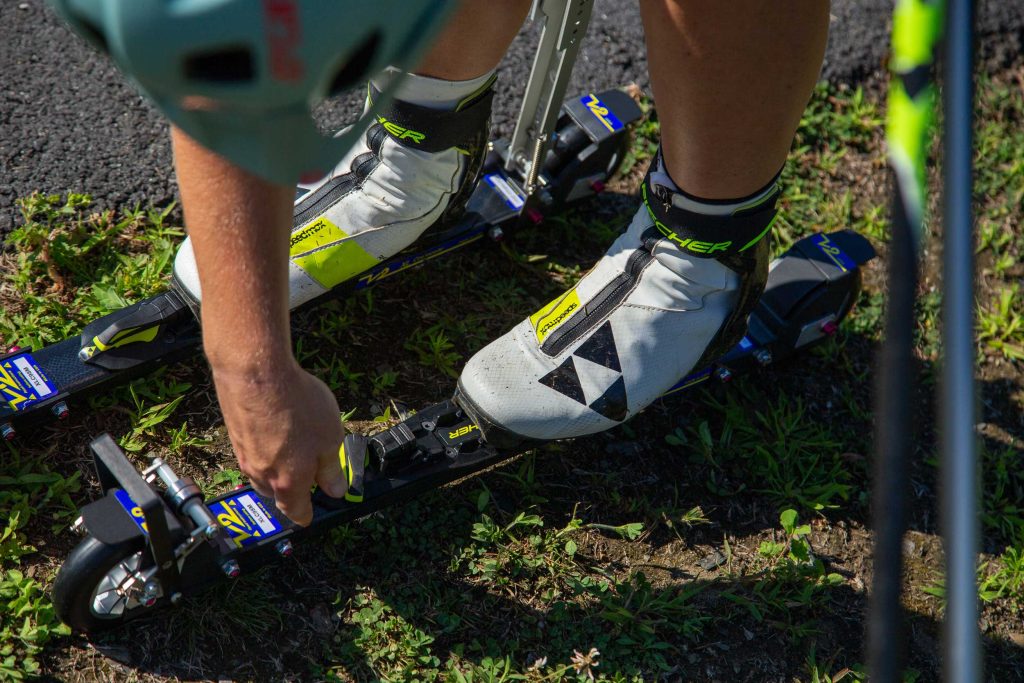
Poles. You can use the same poles as you do in winter. The difference is in the tips. Special pole tips for rollerskiing are tougher and don’t have baskets. You’ll want a metal carbide tip, because the constant contact with the pavement grinds tips. Change them out with hot water and glue, like you would any winter pole basket. And some poles with interchangeable systems include rollerski tips.
Helmet. A bike helmet with some ventilation is ideal.
A couple of suggested things: some sort of reflective or brightly colored clothing; knee and elbow pads when you’re starting out (get these at a general sporting goods store); full-fingered gloves (ski companies make rollerski gloves, though mountain biking gloves also work); sunglasses for overall eye protection.
What’s the basic technique?
There are three primary techniques in rollerskiing: skating, double poling and classical striding. All of the same principles from Nordic skiing apply to your body positioning. One difference is that on most roads, you won’t encounter many steep uphills, so when skating, you’ll use more V2 and V2 alternate than you would on snow. Also, rollerskis will glide farther than snow skis, as there’s less friction between the wheels and the road.
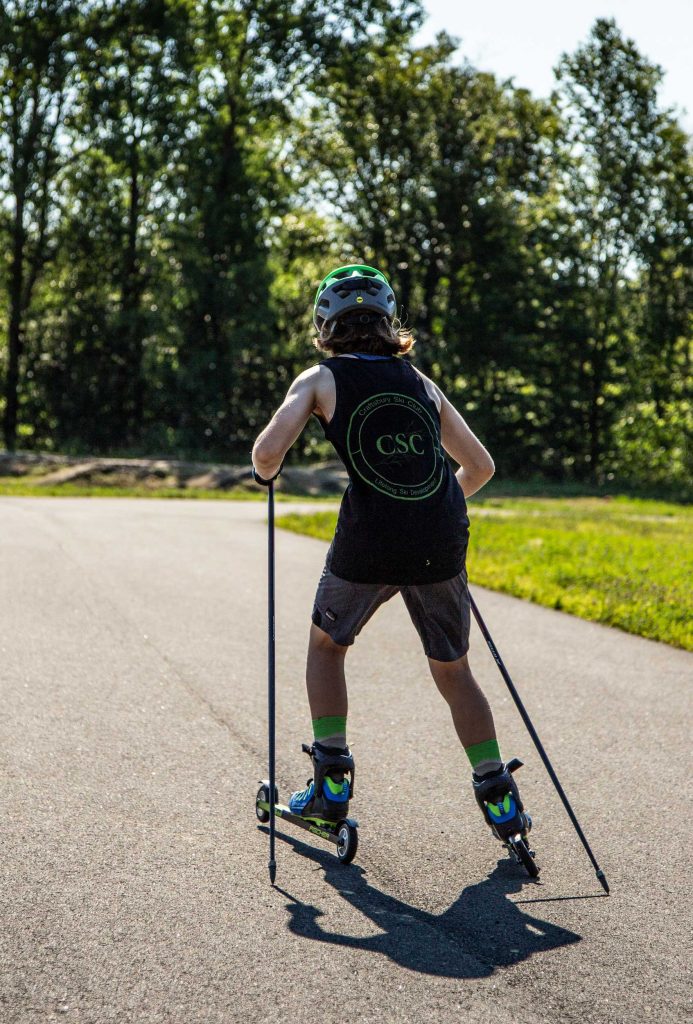
Consider starting without poles, especially on skate rollerskis, to work on balance.
Avoid pushing back too much with the rear foot (like you would do if you were rollerblading). It’s more about having a good side-to-side push. Imagine that the rollerski is the length of a snow ski in terms of how you shift your weight.
It’s a bigger jump to go from classic skiing to classic rollerskiing. Skiers are used to having tracks set, but on rollerskis, it’s up to you to ski in a straight line. There’s a bit of a learning curve to keep the skis from knocking into each other. And ratchets on the wheels prevent the skis from sliding backward.
How do I stop?
Most rollerskis don’t have brakes. Stop by snowplowing. But use a wider stance than you would on snow; you’ll need to provide a lot more outward force so that the rollerskis don’t bump into each other at the front.
A more advanced stopping method is to drag one ski behind you, perpendicular to the other ski; this requires more balance and coordination.
The fastest way to stop? Falling. But you’ll want to do it safely. Try to fall on your butt rather than forward or sideways.
What are the best places to rollerski?
The first choice is a rollerski track at a Nordic center (I wish the U.S. had more of these). In lieu of that, start out in a parking lot that’s not busy. Then progress to bike paths and roads that are also popular bike routes. For a road, take the amount of shoulder into account. And loops that don’t involve stop signs or T-intersections are best. Gradually introduce hills.
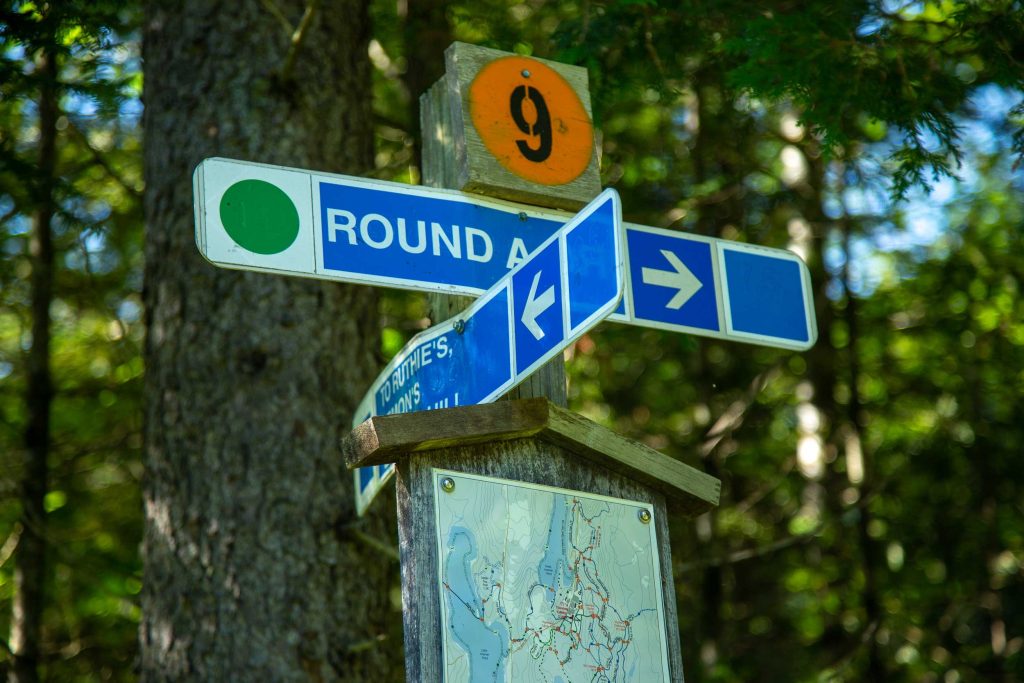
Can I rollerski if it’s just rained?
Yes. Wet pavement isn’t much of a problem, but keep an eye out for wet leaves or pine needles, which can be slippery.
What should I look for when buying rollerskis?
Rollerskis are made of aluminum, carbon fiber or a composite. The main differences among them are weight and flex. Aluminum rollerskis are the lowest priced and longest lasting, but you’ll feel the most road vibration since they are also the stiffest skis.
Choose a rollerski with a lower center of gravity—i.e., a shorter distance from ground to ski—for more stability and balance.
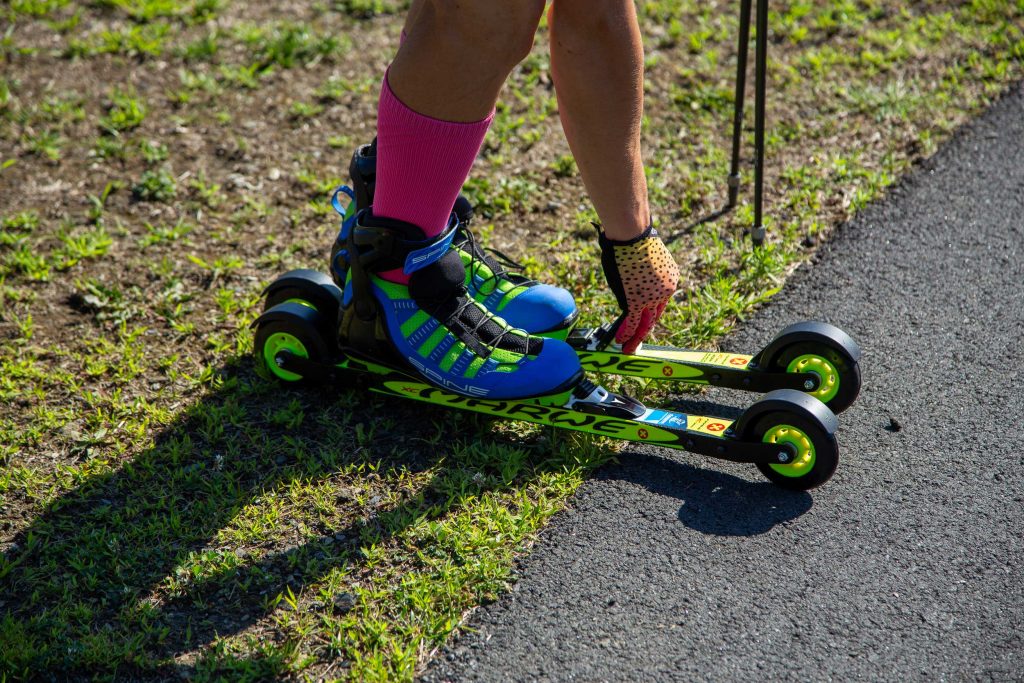
Consider starting out on skate rollerskis, as, thanks to their cuff and stiffer sole, your boots will be more supportive.
The softness of the rubber used for the wheels determines a rollerski’s speed. Rollerski makers often offer different wheel options, ranked from slow to fast. Use slow (soft) or medium (slightly less soft) wheels when starting out; slower wheels will also give you a better workout because of increased friction between the rubber and the road. It’s a good habit to swap skis between your feet for each session, so that the wheels wear down more evenly.
What’s a good goal?
The first way to up the challenge is to increase your distance. A great goal for a beginner rollerskier would be to go 2 to 3 kilometers without stopping. Then, rollerskiing for 45 to 60 minutes is when you start to get real good aerobic benefits, as well as technical benefits from the repetition of movements.